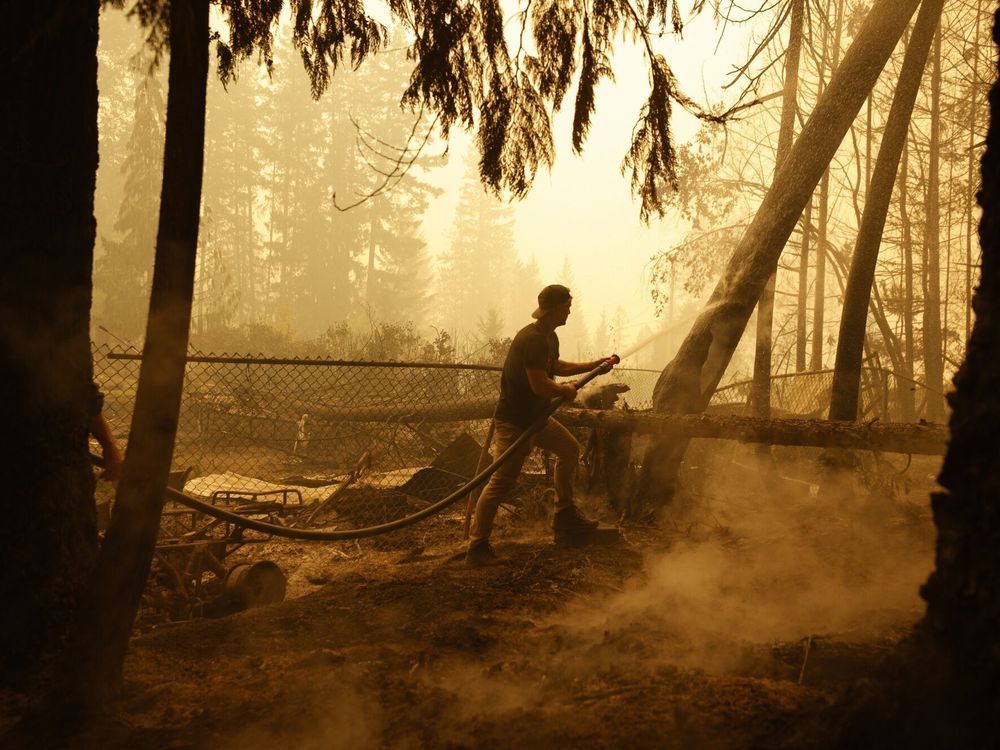
A report by B.C.’s Forest Practices Board urges the B.C. government to enlist logging companies in the effort to reduce wildfire risk across B.C.
The research shows that logging occurs at about 11 times the rate of wildfire risk reduction work in B.C. Between 2014 and 2023, 1,750 square kilometres were logged by forest companies in the wildfire-urban risk zone, but just nine per cent of that area was treated specifically for wildfire risk, the report said.
Wildfire risk reduction in and around communities often includes expensive, specialized work such as thinning timber, creating open spaces that act as fire breaks, pruning the lower branches of trees and removing debris from the forest floor. The idea is to keep a wildfire on the ground and prevent it from moving into the tree tops where it can spread more quickly.
While companies are required to conduct fire hazard abatement, such as chipping, piling and burning debris, long abatement timelines sometimes allow “hazardous fuel loads” to remain on the land through several fire seasons.
Some 16 per cent of B.C. cutblocks surveyed as part of the research did not meet legal abatement requirements, while 21 per cent did not meet them within the legal time frame.
“This investigation highlights a system where responsibilities and incentives remain disconnected. But the knowledge, skills and commitment already exist,” said the report. “The opportunity now is to connect them — to bring wildfire and forestry disciplines and practitioners together to create safer WUIs (wildland-urban interfaces) across all communities within B.C.”
The board wants government to require companies to reduce hazards, rather than merely preventing hazard increases on land they manage. It also wants shorter abatement deadlines.
The report noted that 21,000 square kilometres of forest in the urban wildfire risk zone is classified as having high or extreme wildfire risk. In total, a small portion of that area in and around communities has been treated, a Postmedia investigation showed.
The B.C. government has until Nov. 30 to formally respond to the report’s five recommendations. It is required to indicate whether they accept, partly accept or do not accept each recommendation.
The Forest Practices Board has been sounding the alarm about B.C.’s wildfire risk practices for years.
In 2023, it called for the B.C. government to urgently draft a strategic plan to reduce wildfire risk for the province’s vast forests, noting that 45 per cent of public land in the province is at high or extreme threat of wildfire
The B.C. government doesn’t have a comprehensive wildfire and forest resilience plan, unlike California and Washington state , where plans have helped produce faster and more significant results.